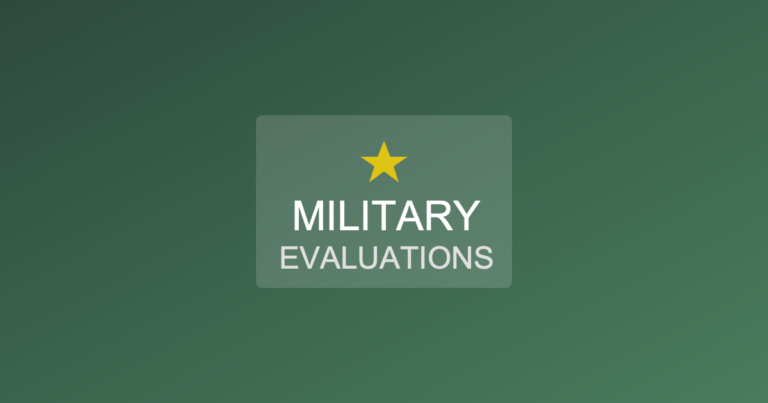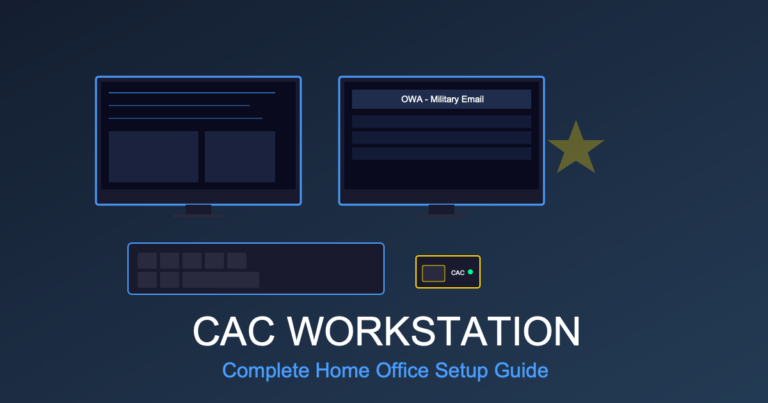Marine Corps FITREP: Complete Writing Guide and Examples 2025
The Fitness Report (FITREP) is how the Marine Corps evaluates performance for officers and Staff NCOs from E-6 through O-6. Your FITREP directly affects promotion boards, assignment opportunities, and career progression. A strong FITREP with specific achievements accelerates your career. A weak one with generic language can stall you for years.
This guide explains how Marine Corps FITREPs work in 2025, including the marking system, writing effective comments, and what promotion boards actually look for when reviewing your record.
What is a Marine Corps FITREP?
The Fitness Report (NAVMC Form 10835) evaluates Marines in grades E-6 through O-6 on performance, leadership, and professional attributes during a specific reporting period. FITREPs serve several purposes:
- Promotion Decisions: Primary factor that promotion boards use for selection
- Assignment Consideration: Influences billets and career opportunities
- Performance Feedback: Provides developmental guidance for improvement
- Official Record: Becomes permanent part of your OMPF throughout your career
The Marine FITREP uses a mark range system from 0.0 to 7.0 combined with Relative Value (RV) rankings that compare you against peers in the same grade. This differs from Army NCOERs (which use rating boxes) and Air Force EPRs (which use forced distribution).
FITREP Reporting Periods and Deadlines
Standard Reporting Cycles:
- Annual Reports: Most Marines get one FITREP per calendar year
- Minimum Observation Period: At least 60 days required for valid evaluation
- Submission Deadline: Must be submitted within 30 days of reporting period ending
Special FITREP Types:
- Change of Reporting Senior (COR): When your reporting senior PCSs or retires
- Promotion FITREP: Required when you’re selected for promotion
- Transfer FITREP: When you PCS to a new unit
- Special Requested: Can be requested after significant achievement
- Adverse FITREP: Issued for misconduct or documented substandard performance
2025 Reporting Cycle: Most annual FITREPs cover 1 January through 31 December and are due by 31 January the following year.
FITREP Grading System Explained
Mark Range System (0.0 to 7.0):
| Mark Range | Performance Level | What It Actually Means |
|---|---|---|
| 7.0 | Perfect | Truly unprecedented performance—extremely rare and requires extraordinary justification |
| 6.5 – 6.9 | Outstanding | Exceptional performer in top 5% of peer group |
| 6.0 – 6.4 | Excellent | Significantly above average, top 20% of Marines |
| 5.5 – 5.9 | Above Average | Solid performer, competitive for promotion |
| 5.0 – 5.4 | Average | Meets all standards but not standout performer |
| Below 5.0 | Below Standards | Not recommended for promotion—serious career impact |
Relative Value (RV) Rankings:
The Reviewing Officer assigns a Relative Value number that ranks you against all other Marines in the same pay grade that they’ve evaluated. This comparative ranking carries significant weight with promotion boards:
- RV 1: Number one ranked Marine in that grade—highest possible recommendation
- RV 2-5: Top tier performers, strongly recommended
- RV 6-10: Above average to competitive range
- RV 11+: Below competitive threshold for promotion
Important: High numeric marks (6.5+) combined with a poor RV ranking (15+) send conflicting signals. Promotion boards pay close attention to RV rankings because they show how you compare against actual peers, not just arbitrary standards.
FITREP Sections Breakdown
Section A: Administrative Data
Basic identification including name, rank, EDIPI, reporting period dates, and type of report. Accuracy matters here—administrative errors can delay submission and raise questions.
Section B: Mission Accomplishment & Billet Description
Describes the Marine’s assigned duties and scope of responsibility. Be specific about the level of leadership, number of personnel supervised, and mission criticality.
Good Example:
“Platoon Commander, 1st Battalion, 5th Marines during 7-month deployment to Al Anbar Province. Led 42 Marines in counterinsurgency operations, responsible for $12M in assigned equipment. Planned and executed 87 combat patrols with zero friendly casualties while maintaining 95% equipment operational readiness.”
Section C: Evaluation Categories
Fourteen specific attributes rated on the 0.0-7.0 scale:
- Leadership
- Professional Competence
- Tactical/Technical Skills
- Decision Making
- Individual Character
- Initiative
- Judgment
- Courage (Moral and Physical)
- Mission Accomplishment
- Endurance
- Loyalty
- Cooperation
- Intellect
- Personal Appearance/Military Bearing
Marking Strategy: Marking all 7.0s actually hurts credibility with promotion boards. They’ve seen thousands of FITREPs and recognize grade inflation. Strategic marks in the 6.5-6.9 range with strong narrative support are more believable than across-the-board perfect scores.
Section D: Comments on Performance
This narrative section determines whether your FITREP helps or hurts your career. Use specific achievements with quantifiable results and clear mission impact.
Writing Effective FITREP Comments
Structure for Strong Comments:
Effective FITREP bullets follow a pattern of context, action, and measurable results:
- Context: What was the situation or mission
- Challenge: What made it difficult or significant
- Action: What the Marine specifically did
- Result: Quantifiable outcome and impact
Strong FITREP Comment Examples:
Leadership in Combat:
“Led 35-Marine rifle platoon through 7-month Afghanistan deployment. Planned and executed 94 combat patrols covering 2,400 kilometers across challenging terrain. Unit directly engaged enemy forces in 12 separate contacts with zero Marines wounded or killed. Exceptional tactical leadership under fire recognized with Navy Achievement Medal with Combat V device.”
Mission Accomplishment and Management:
“Company Logistics Officer responsible for $18M equipment and supply account. Maintained zero loss or discrepancy throughout deployment. Coordinated 47 convoy operations delivering 340 tons of supplies during Operation Inherent Resolve, sustaining battalion operations across 4 forward operating bases. Promoted to Captain ahead of 78% of peer group.”
Professional Development:
“Completed Expeditionary Warfare School as distinguished graduate (top 10% of 120 students). Earned 4.0 GPA in MBA coursework while maintaining full operational tempo. Qualified as Combat Water Safety Instructor. Self-initiated professional development significantly exceeds requirements—select for resident Professional Military Education at earliest opportunity.”
Initiative and Innovation:
“Identified critical training gap in urban warfare preparation. Designed and implemented comprehensive 6-week Close Quarters Battle course training 180 Marines. Program adopted across battalion and directly contributed to 32% reduction in room-clearing training casualties during pre-deployment workup.”
Weak Comments That Don’t Help:
❌ “Outstanding Marine who performed all assigned duties professionally. Recommend for promotion.”
This is too vague and could describe any Marine. No specific accomplishments, no measurable results, no differentiation from hundreds of other FITREPs.
❌ “Completed all required training courses on schedule.”
Meeting minimum training requirements is expected—not noteworthy. Promotion boards assume you completed basic requirements.
❌ “Great attitude and positive personality. Well-liked by peers and subordinates.”
Being likable doesn’t demonstrate mission accomplishment. Focus on measurable performance and results, not personality traits.
FITREP Red Flags That Hurt Promotion
Promotion boards look for specific warning signs when reviewing FITREPs:
- Adverse FITREP: Automatically disqualifying for promotion in most selection boards
- Marks Below 5.0: Indicates failure to meet minimum acceptable standards
- High RV Number: Relative Value above 15-20 signals below-competitive performance
- Qualified Recommendations: Phrases like “recommend when more mature” or “needs additional experience” damage promotion chances
- Faint Praise Language: Words like “adequate” and “satisfactory” are career killers in FITREPs
- Brief Narratives: Short comments suggest lack of notable achievements worth mentioning
- Typos and Errors: Demonstrate lack of attention to detail from both Marine and rater
FITREP Submission Process
- Marine Self-Assessment: Compile your accomplishments and provide to reporting senior
- Reporting Senior Drafts FITREP: Assigns marks and writes narrative comments
- Reviewing Officer Review: Higher authority assigns Relative Value ranking
- Marine Counseling Session: Marine reviews FITREP (must occur within 10 days of period ending)
- Electronic Submission: Upload completed FITREP via MCTFS (Marine Corps Total Force System)
- Record Verification: Check MOL (Marine Online) to confirm FITREP posted correctly to your record
Critical Timeline: FITREPs must be submitted within 30 days of the reporting period ending. Late submissions get flagged and can raise questions with promotion boards.
Disagreeing with Your FITREP
If you receive a FITREP that you believe is inaccurate, unjust, or doesn’t reflect your actual performance, you have options:
Informal Resolution:
Request a counseling session with your Reporting Senior before signing the FITREP. Present specific facts and documentation supporting your position. Many disputes resolve at this level through professional discussion.
Formal Appeal Through BCNR:
Submit a formal appeal to the Board for Correction of Naval Records (BCNR) within 3 years. You must provide substantial evidence demonstrating error, injustice, or procedural irregularity.
Reality Check: Appeals rarely succeed without compelling documentary evidence. Prevention is better than appeal—maintain continuous communication with your chain of command throughout the reporting period.
FITREP Tips for Junior Officers
- Keep a Performance Journal: Document achievements, awards, and significant events as they happen—you’ll forget details later
- Regular Feedback Sessions: Schedule informal check-ins with your reporting senior throughout the year
- Seek High-Visibility Assignments: Challenging billets create opportunities for FITREP-worthy accomplishments
- Quantify Everything: Track specific numbers—personnel led, missions completed, resources managed, training conducted
- Professional Military Education: Complete PME requirements early, pursue civilian graduate education
- Help Your Reporting Senior: Provide draft bullet points highlighting your top 3-5 accomplishments with specific metrics
FITREP Tips for Staff NCOs
- Master Your MOS: Be the recognized expert in your occupational specialty
- Document Mentorship Results: Track how junior Marines you mentor perform—their success reflects your leadership
- Solve Systemic Problems: Identify and fix issues, don’t just report them to higher
- Operational Experience Matters: Competitive FITREPs often require deployment or field operations experience
- Civilian Certifications: Professional credentials in your field demonstrate initiative beyond minimum requirements
Marine Corps FITREP vs Other Services
| Service | Evaluation System | Key Differences from Marine FITREP |
|---|---|---|
| Army | NCOER / OER | Uses rating boxes (Highly Qualified, Qualified, Not Qualified) rather than numeric marks |
| Navy | FITREP / EVAL | Nearly identical system—Marines use Navy forms (NAVMC 10835 is Navy form) |
| Air Force | EPR / OPR | Forced distribution system limits the number of top ratings per unit |
| Coast Guard | OER / EPR | Uses 1-7 numeric scale similar to FITREP with comparison rankings |
Official Resources and References
- MCTFS (Marine Corps Total Force System): Electronic FITREP submission and management
- Annual MARADMIN Messages: Updates to FITREP policy and procedures
- Marine Online (MOL): View your posted FITREPs and verify accuracy
- MCO 1610.7: Complete Marine Corps Performance Evaluation System order
Common FITREP Mistakes to Avoid
- Waiting until submission deadline to start writing—rushed FITREPs show poor quality
- Marking all 7.0s across the board—damages credibility with promotion boards
- Copying generic language from previous FITREPs without customization
- Failing to proofread for typos, grammatical errors, and factual inaccuracies
- Omitting major achievements because you forgot to document them during the year
- Not consulting the Marine being evaluated for their input on accomplishments
- Submitting late without valid justification—raises red flags for boards
Understanding Promotion Board Perspective
Marine Corps promotion boards review hundreds or thousands of FITREPs during selection cycles. Board members spend less than 2 minutes reviewing your entire Official Military Personnel File. Your FITREPs tell your career story in that brief window.
Boards look for patterns across multiple evaluations—consistent high marks, steady progression of responsibilities, specific measurable achievements, and strong comparative rankings. One exceptional FITREP helps, but a pattern of excellence over multiple reporting periods is what gets Marines selected.
Whether you’re writing FITREPs for Marines under your command or preparing your self-assessment for your own evaluation, invest the time to make each report strong. Document accomplishments continuously, communicate regularly with your chain of command, and always quantify mission impact with specific metrics.
Semper Fidelis.
Related Military Evaluation Guides:








